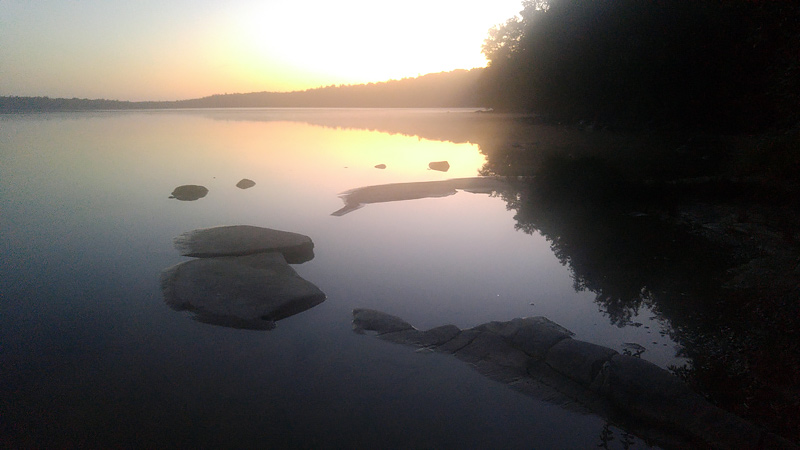Bruce Peninsula - First Week of Summer
For those of us who practice nature appreciation, the Bruce Peninsula is an interesting and exciting destination. Because of the variety of different landscapes, the area has an exceptionally diverse array of flora and fauna. The Niagara Escarpment cliffs and rocky shoreline dominate the east side of the peninsula. On the west, there are beaches, fens and coastal wetlands. Throughout, you will find alvars, dolostone segments, lakes, streams, wetlands, open farmland and dense forests.
We stayed at the Bruce Peninsula National Park during our six-day visit. We have explored this area many times, but usually in the late May or early September. On this occasion, we decide to come on the first 6 days of summer. We hoped to find different flora that blooms later in the season and to enjoy the long days surrounding the Summer Solstice. This time of year, the twilight at the park lasted until after 10pm.



Although Bruce Peninsula National Park is a beautiful place, some of the areas were very busy. Either the park is very noisy or we just had the bad luck of having loud disrespectful campers around us. Fortunately, there is more to the Bruce than the Grotto!

Although we were very disappointed to find out that the Singing Sands area was closed for a major construction project, we did enjoy visiting some truly amazing alternative natural areas. This would include places like Petrel Point Nature Reserve (picture left), Bruce Alvar and Oliphant Fen. Due to the delicacy of the plant life at these fragile areas, visitors must explore from the boardwalks and walkways provided. The use of binoculars are an excellent way to observe the wildlife and plants. To photograph the wildflowers, I used a telephoto lens equivalent to 420mm (in 35mm format) and a sturdy tripod and simply photographed them from the boardwalk.
Fens are unique type of wetlands that are dominated by grass and sedges. They often have a high diversity of plant species including carnivorous plants such as Sundew, Pitcher Plants and Butterwort. The trees include white cedar and tamarack.
A variety of wildflowers grow in fens including Grass Pink, Lady's Slippers and Rose Pogonia.
Alvars are limestone plains with thin or no soil and have a very sparce grassland vegetation. Plants here include Lakeside Daisies, Indian Paintbrush, Balsam Ragwort, Rock-cress and Bluets, just to name a few.
Bruce Peninsula National Park also has some great hiking trails, Cyprus Lake trail follows the circumference of the named lake and multiple trails lead to Georgian Bay and connect to the Bruce Trail that follows the coastline and the coastal forests. The Georgian Bay shoreline is rugged bedrock and the Bruce Trail has numerous lookouts and
Bird sightings in the park included Red-eyed Vireos, Ovenbirds, American Redstarts, Black-throated Green Warblers, Yellow-rumpled Warbler, Wood Thrush, Northern Waterthrush, Eastern Phoebes, Common Terns, Common Mergansers, Common Loons, Black-crowned Night Herons and Great Crested Flycatcher. On the Bruce, we sighted a nice variety of flora including orchids and rare ferns. Dragonflies and Damselflies were abundant and a few butterflies were about. Mammal sightings included a weasel with prey, mischievous racoons and a Red Fox that wandered about the campgroud.
Although we may want to avoid the Bruce Peninsula National Party Park, Bruce County will always be one of our favourite destinations. So much beauty, so many great natural areas to explore.











